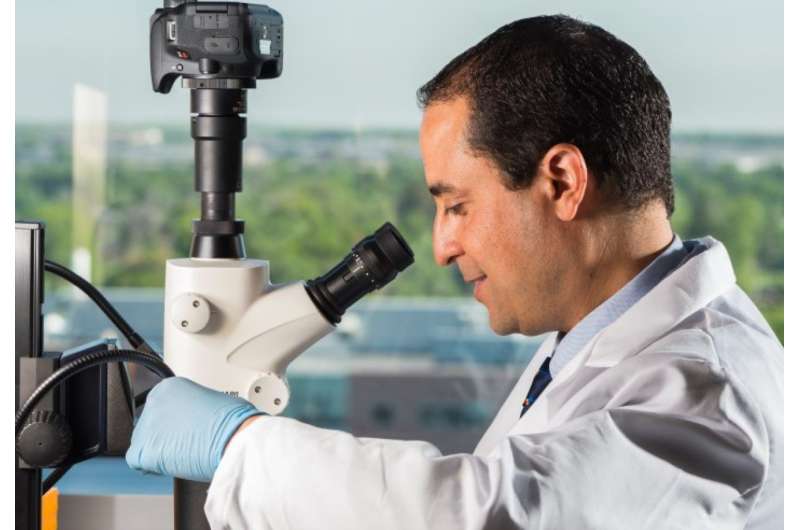Bioengineering an alternative to open fetal repair for spina bifida

Researchers from Children's Hospital Colorado and the University of Colorado Anschutz Medical Campus recently discovered a promising alternative to open fetal surgery for spina bifida repair. Ahmed Marwan, MD, fetal surgeon and researcher at the hospital's Colorado Fetal Care Center, along with researchers Deawon Park, PhD, and James Bardill from the CU Department of Bioengineering, have developed an alternative approach to current in utero treatment for spina bifida: a minimally-invasive repair using a bioengineered material - a reverse thermal gel (RTG) - to cover the neural tube defects (NTD) at an earlier gestational age than traditional treatment.
While developing in the mother's womb, a baby's brain and spinal cord form a neural tube. Failure of this tube to fully close causes NTDs, such as spina bifida. As many as 10 percent of infants born with an open NTD die because of related complications, while nearly 1,500 babies are born with spina bifida each year.
The recently published research, led by Dr. Marwan and his team, studied the effects of the chemically synthesized, novel RTG called PSHU-PNIPAAm and characterized its ultrastructure by scanning electron microscopy, its stability in amniotic fluids and its permeability.
"Our team's specific aim was to study the effects of the chemically synthesized material on the basic cellular functions of mouse neonatal fibroblasts, keratinocytes and neurons - the types of cells exposed in open NTDs, and inject the material into mouse embryos in utero," said Dr. Marwan, who is also an assistant professor of surgery at the CU School of Medicine. "We found that the in utero application of the biomaterial was technically feasible and did not harm fetuses. The RTG successfully formed a gel and attached to the skin, demonstrating successful in utero suitability as a potential alternative for NTD closure."
As studies continue, Dr. Marwan and his team will explore the ability of the RTG to act as a scaffold for cellular interaction, and they will make additional chemical modifications to incorporate biomolecules that mimic the extracellular matrix environment of a fetus and enhance cellular activities.
The potential to use the RTG in a minimally invasive approach at an earlier gestational age offers a promising alternative to current in utero repairs for spina bifida.
The paper was published in the 2017 Macromolecular Bioscience journal.
More information: Ahmed I. Marwan et al. Reverse Thermal Gel for In Utero Coverage of Spina Bifida Defects: An Innovative Bioengineering Alternative to Open Fetal Repair, Macromolecular Bioscience (2017). DOI: 10.1002/mabi.201600473

















